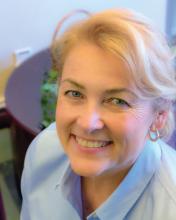The study won an award for best overall clinical abstract at the meeting. Dr. Wilder-Smith reported having no financial disclosures. The project was supported with funding from the National Institute of Biomedical Imaging and Bioengineering and the Beckman Foundation.
Conference Coverage
Probe linked to smartphone found effective in diagnosing oral cancer
Publish date: April 25, 2018

REPORTING FROM ASLMS 2018

